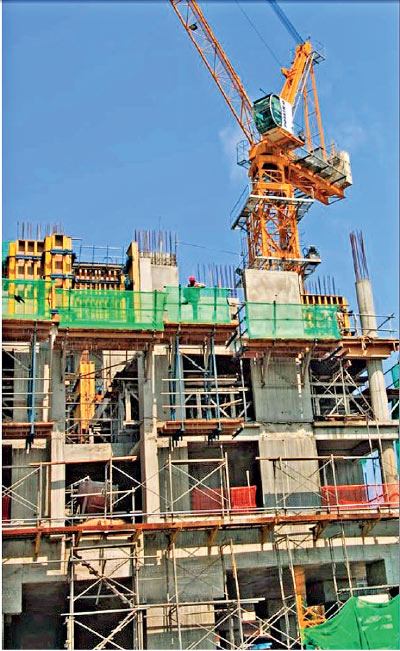Wednesday Jan 21, 2026
Wednesday Jan 21, 2026
Monday, 1 January 2024 00:27 - - {{hitsCtrl.values.hits}}
 Sri Lanka is about to lose one of its largest industries. This is an industry that contributed around 9.6 % to the GDP and involves nearly 2.6 million stakeholders directly and indirectly. It is none other than the Sri Lankan construction industry.
Sri Lanka is about to lose one of its largest industries. This is an industry that contributed around 9.6 % to the GDP and involves nearly 2.6 million stakeholders directly and indirectly. It is none other than the Sri Lankan construction industry.
At present, the industry has shrunk by 60%. Over 500,000 employees have been retrenched and over 10, 000 professionals have left the county. The Government has kindly appointed a task force to counteract this issue. All stakeholders contributed to this cause and produced a 51-point report. From this, the Government has chosen 11 points of concern and showed their support to fulfil these points. Yet nothing has happened.
Therefore, immediate attention should be paid to put the construction industry back on track by the existing Government or any future Governments that shall acquire power.
The priorities are as follows:
Providing aid to bring back ruined contractors who have lost due to the sudden stoppage of their projects and non-settlement of their bills in a reasonable manner. Many Government officers have ignored the commitments of contractors as noted below, and this harassment has devastated them:
bonds and guarantees issued by banks cost overruns
settlement of suppliers, sub-contractors labour wages and dues harassment by banks to settle bank dues, encashing their bonds and pressing for settlements consultants too are ignoring this situation
not approving their EOTs, variations, claims, etc.
 These contract disputes are further torturing contractors especially, the SME sector.
These contract disputes are further torturing contractors especially, the SME sector.
Imagine a small/medium contractor who acquires a job and puts all his life efforts into that one project. They sometimes pledge their own home as collateral for bonds and guarantees, high-interest loan for bridging finance, gaining credit from material suppliers and even equipment, in the hope of future projects. Meanwhile, material prices increase 3-4 fold that are not remunerated to contractors. Coping with all this they still survive, however, when their projects are stopped, it is the final blow to their livelihood.
To make matters worse, these projects are acquired via highly competitive bids with 3-4% margin or even at a cost simply for the survival of their company. In such projects cash flows are damaged, financial stability is damaged and in short it damages their whole business cycle.
Due to a fault of the economy or the Government the contractor has no relief from banks or creditors, thus marking the end of yet another of Sri Lanka’s few remaining contractors.
To counter this problem the following recommendations are proposed:
A high-powered committee, comprising government administrative officers, industry representatives and experts in construction policies and contracts be appointed to deal with contractor issues, enhance contractual obligations, facilitate amicable dispute resolution, and evaluate the current terms of contract in the context of crisis and make appropriate amendments for adequate compensation mechanisms, in a way favourable to the contractor since he is not at fault.
Restart halted projects that are half-done structures posing a risk. Help contractors of relevant projects to receive payment for the cost overruns and complete the projects without incurring losses. Funds can be drawn from the Rs.55 billion allocated for the construction industry and the Rs. 1.26 trillion marked for new developments.
Government should negotiate and encourage restarting donor funded projects
Roads are deteriorating rapidly. Therefore, the Government should commence road maintenance and overlays. If this is not financially feasible, imposing a minor road tax would be beneficial, rather than waiting for both people and vehicles to suffer due to dangerous roads.
Construction cost and VAT increase:
With construction costs skyrocketing in the year 2022, the Sri Lankan construction cost has reduced to levels on par with neighbouring countries namely, Indonesia, Malaysia, Vietnam etc. Therefore, even with VAT increases for material and fuel we can manage to be at the range of $800/m2, which is still a favourable price to restart private sector projects and attract FDIs. This is good news.
Fair distribution of work:
Mindful of the fact that there is no work in the country, we strongly advise that the Government and regulating authorities control the distribution of work in a way that is just and fair to all, so that a few large companies do not grab all the work that others badly need for survival.
This is what the industry needs to survive the year 2024.